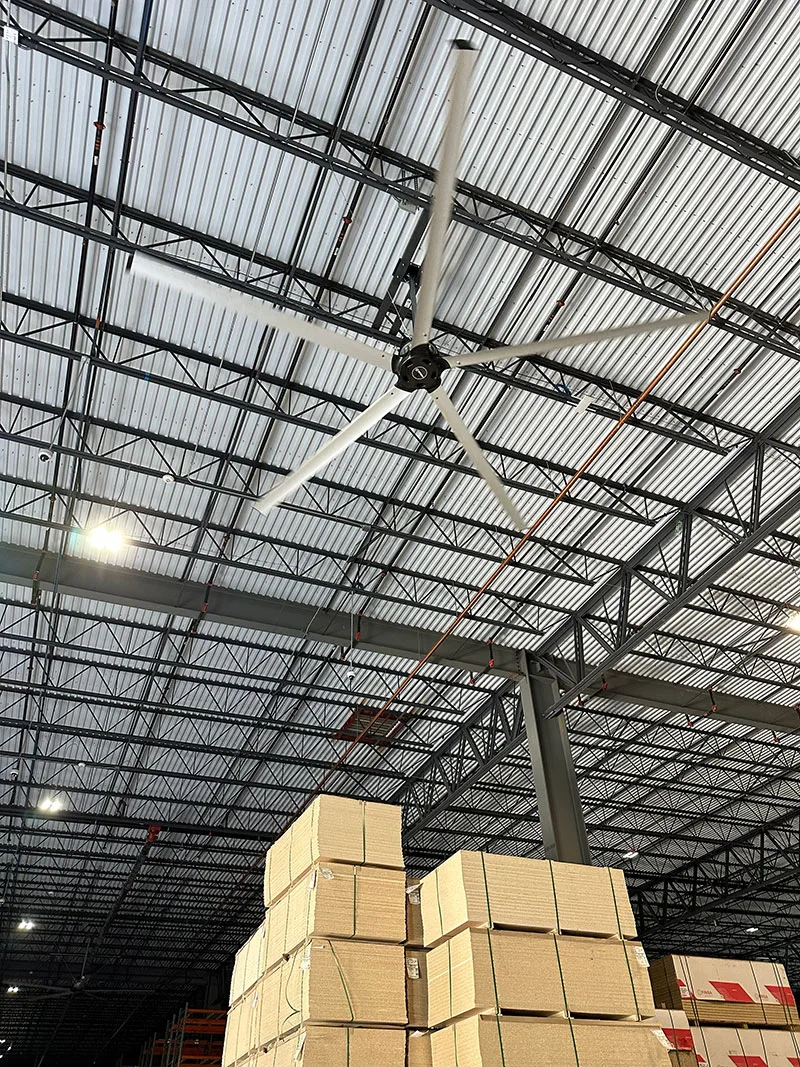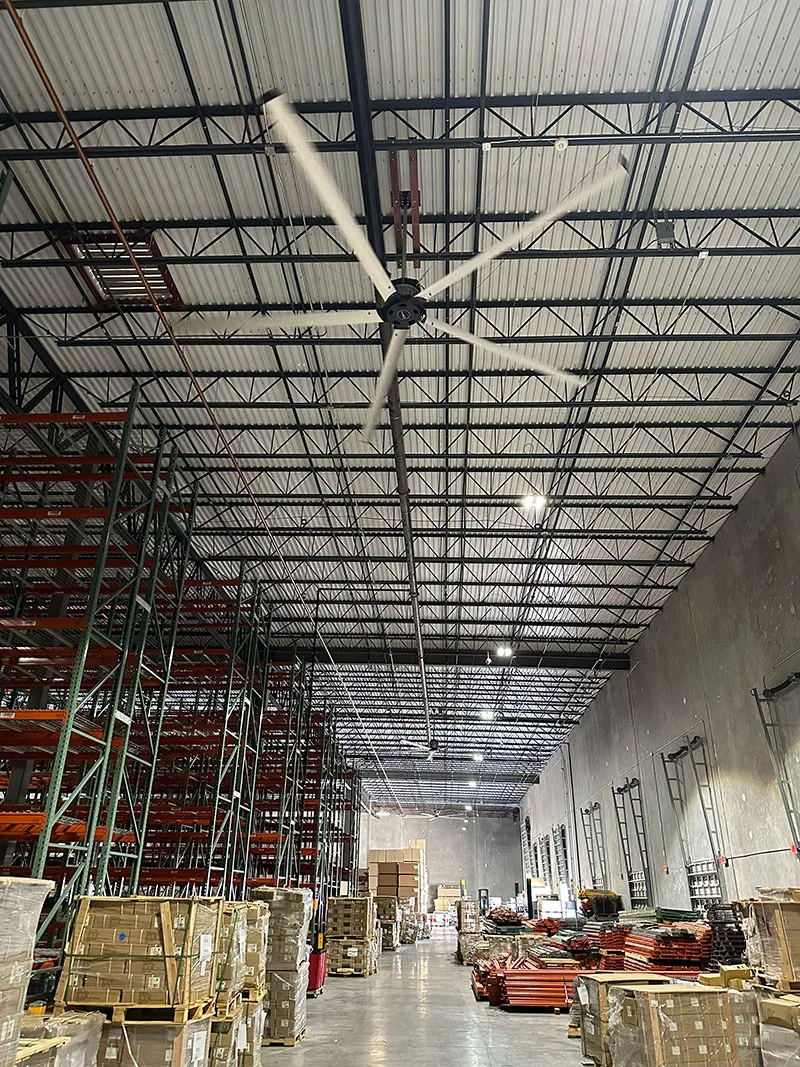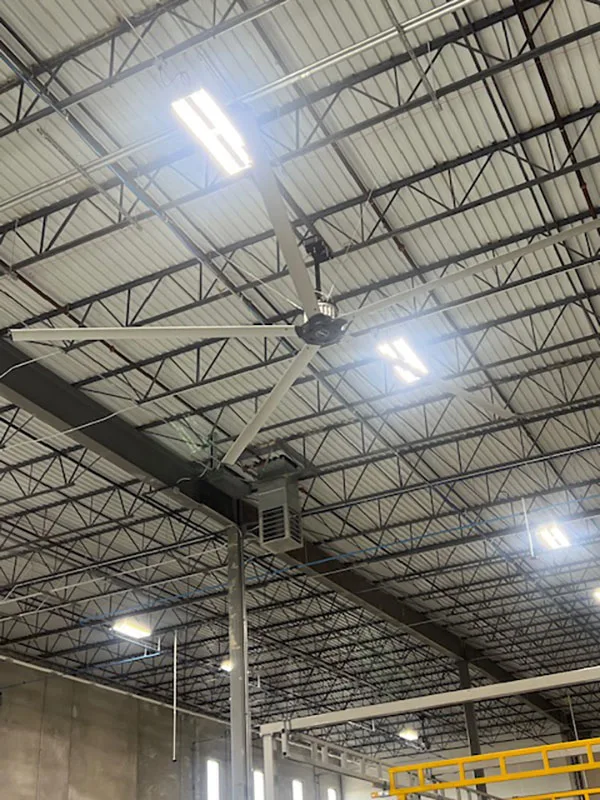
When facility managers invest in new equipment, one question becomes more important than any other: What do we get back in terms of energy for our investment? In an environment where operational expenses are increasing and efficiency objectives are narrowing down, the sharpest facilities are not merely purchasing equipment; they are purchasing power output.
That is where Energy Return on Investment (EROI) is an important decision-making tool. It takes the discussion off balance sheet price tags and puts the discussion on its reality, namely, how well does this asset turn electricity into long-term savings, comfort and productivity?
Hardly any technologies rate as consistently and impressively on EROI as High-Volume, Low-Speed (HVLS) fans.
What is EROI, and Why Does It Matter?
Energy Return on Investment (EROI) is a measure of the value generated from the energy used. High EROI in industrial and commercial facilities means:
- Lower energy costs
- Cutting down the pressure on HVAC systems
- Improved thermal comfort
- More operational stability
- Increased long-term asset performance
In simple terms:
How many kilowatt-hours of savings does one get in return on each kilowatt-hour you spend?
Compared to the traditional high-speed fans, which use more energy per minute but cover a limited area, HVLS fans produce an enormous flow of air using a very small amount of energy. This endears them to be among the most effective air-moving technologies that currently exist.
Why HVLS Fans Deliver Exceptional EROI
The idea of HVLS fans is very simple but effective:
Move more air at a lower speed.
These fans circulate masses of air using a minimum amount of energy due to large blades, aerodynamic profiles and efficient motor designs. They do not blast air in small pockets, but instead push it softly and steadily throughout the entire facility.
Here’s why that matters:
1. Low Energy Intake, High Airflow Expiration
One HVLS fan can substitute 20 to 30 small high-speed floor or wall fans, yet uses a fraction of the power.
- Usual HVLS power consumption is less than that of a usual hair dryer
- Coverage air is up to 20,000+ sq. ft. per fan
This implies that each watt of energy will produce maximum movement and quantifiable cooling.
2. Dramatic HVAC Load Reduction
Air conditioning and industrial cooling are some of the largest contributors to the energy bills in facilities. HVLS fans reduce that load by:
- Enhancing air mixing
- Delivering cool air evenly
- Eliminating hot pockets
- Increasing the efficiency of thermostats
Real-world results?
A reduction in cooling costs of up to 20-30 percent is observed in many facilities; the savings may be even greater in areas with extended summers.
3. Winter Destratification: Hidden EROI Gold
During winter, warm air is lifted to the ceiling and it remains there, wasted. The HVLS fans push the air back towards the floor, efficiently cutting heating cycles and gas use.
Destratification is a process that will conserve up to 25 percent of heating energy, turning a fan into an ROI engine all year round.
4. Longevity and Low Maintenance
The longer an asset is run with limited maintenance, the greater its lifetime EROI.
HVLS fans excel here, too. They have fewer moving parts, an effective motor design, and long-lasting blade architecture and come with:
- Long service intervals
- Minimal maintenance
- 10+ year operational lifespan
The combination of long life, low energy, and regular savings would result in an elite EROI value.
Beyond Energy: Operational Benefits That Multiply Savings
HVLS fans will provide a significantly higher financial payoff than the saved kilowatt-hours. All the aspects of the facility ecosystem are affected by their influence.
Better Working Conditions = Better Productivity
Improving airflow means workers will have a comfortable working environment, which minimizes fatigue, heat stress, and the frequency of errors. A comfortable workspace allows workers to be more productive and work more efficiently.
Equipment Longevity
With equal distribution of airflow, machines are not prone to overheating, and the dust is minimal. This leads to:
- Fewer breakdowns
- Longer equipment life
- Lower maintenance costs
Improved Product Quality
Food processing plants, pharma units, and agricultural facilities in warehouses have stable environmental conditions that eliminate spoilage/degradation and provide an indirect yet important pay-off on energy.
Safety Improvements
HVLS fans lessen the development of condensation, dampness, and slick floors, making workplaces safer. Fewer incidents will result in fewer interruptions and reduced compliance risks.
These superimposed advantages increase the payback of each watt used in the long run.
Calculating EROI in Real Facilities
One might view EROI by comparing:
Energy Input
The amount of power that will be needed to run the fan on a daily basis.
Energy + Operational Output
Savings from:
- Reduced HVAC usage
- Replaced small fans
- Stabilized temperatures
- Lower maintenance
- Improved productivity
To most facilities, an HVLS system will recover the initial investment made in 12-24 months, depending on the climate and usage. All savings continue to accumulate year after year, often exceeding the initial investment.
That’s high EROI in action.
Why Refresh Fans Deliver Higher EROI Than Typical HVLS Options
Different types of fans are designed for specific functions. Refresh Fans are designed to be the most efficient with:
- High-performance Italian motor technology
- Aerodynamic blade design to create the maximum air power
- Accurate positioning machines with streamlined efficiency and power consumption
- Strong build that guarantees long-term performance
All the design features make your EROI dramatically higher, not only on the first day, but also throughout the life of the fan.
The Bottom Line: EROI Should Drive Every Facility Decision
In the modern-day age of energy awareness, the most intelligent investments are those that repay more than they consume. This is precisely the equation of HVLS fans:
- Low energy consumption
- High airflow output
- Year-round savings
- Improved comfort and safety
- Operational resiliency and long-term ROI
In case you are planning to construct a facility that is efficient, cost-effective and future-ready, measuring EROI is not optional but instead mandatory. And there are not many investments with greater, clearer, and consistent EROI than a good HVLS fan.
When planning to invest in HVLS fans, you are not simply buying a fan. You are investing in fewer bills, improved performance and improved facilities over the coming years.
FAQs
- How do HVLS fans contribute to Energy Return on Investment (EROI)?
EROI is an assessment of the long-term value provided by the energy used by your fan. The extraordinary level of EROI of HVLS fans is because the fans operate on a large volume of air with little power consumption, which results in decreased cooling loads, flattened temperatures, and ongoing energy savings around the facility. - How do HVLS fans lower energy bills?
HVLS fans enhance the efficiency of airflow, remove hotspots and promote the performance of HVAC by sharing the cool or warm air evenly. This minimizes the number of HVAC cycles, minimizing your total energy use as well as reducing monthly operation costs directly. - Are HVLS fans economically advantageous all year round?
Yes. HVLS fans increase cooling and decrease the AC load in summer. Their year-round performance makes them one of the most dependable tools for energy saving that is long-term and continuous. - What is the payback period of HVLS fans in a facility?
Payback period will be achieved in most facilities in a range of 12-24 months, depending on the climate of the region, hours of operation, and the current state of the HVAC facility. Since the fans save cooling and heating expenses directly, the pay-back commences on the first day and increases the fan’s lifespan. - Do HVLS fans outperform small fans?
Absolutely. A single HVLS fan can substitute dozens of small high-speed floor or wall fans and will use much less electricity. This will decrease clutter, maintenance, and energy expenditure, and HVLS fans will remain much more cost-effective and more efficient in the long term.
- Which variables affect the EROI of HVLS fans?
EROI depends on the size of the facility, the ceiling height, the climate and the HVAC setup. When installed correctly, HVLS fans maximize airflow per watt, and the equipment strain is minimized, the temperatures are stabilized, and the net profit is constant during their working period.

